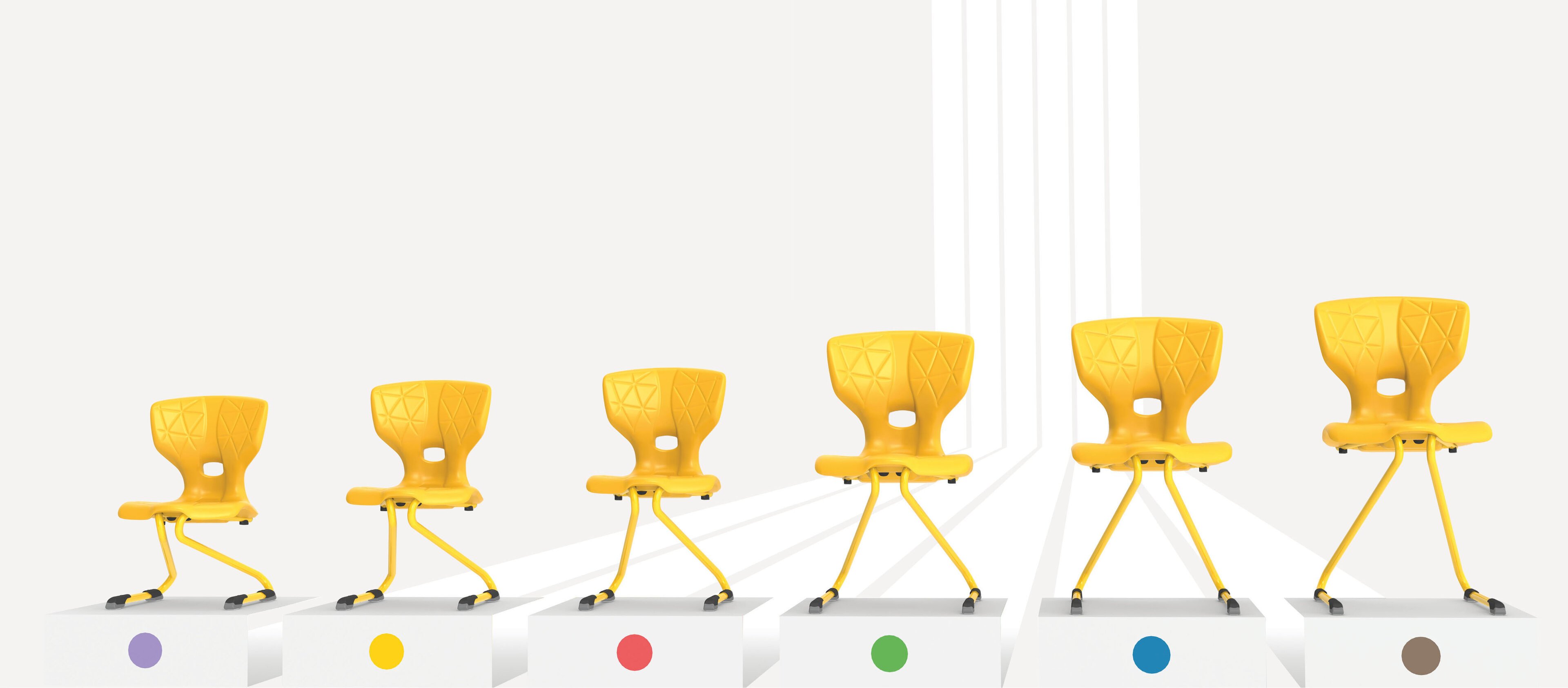Size chart
SIZE 2
Pupil size
108-121 cm
Table height
53 cm
Seat height
31 cm
SIZE 3
Pupil size
119-142 cm
Table height
59 cm
Seat height
35 cm
SIZE 4
Pupil size
133-159 cm
Table height
64 cm
Seat height
38 cm
SIZE 5
Pupil size
146-176 cm
Table height
71 cm
Seat height
43 cm
SIZE 6
Pupil size
159-188 cm
Table height
76 cm
Seat height
46 cm
SIZE 7
Pupil size
174-207 cm
Table height
82 cm
Seat height
51 cm
CHILDREN BECOME PEOPLE.
Children often grow faster than you think. That's why it's particularly important when planning a room to take into account the fact that first-grader can grow up to 80 cm taller before they are fully grown. If you check every six months whether the desks and chairs are still the right height for all learners, you are on the safe side: Is the foot position still correct? And are the elbows level with the table surface when sitting upright?
A2S furniture offers six size divisions that are easy to distinguish thanks to their coloured markings. And for children and adults who are a little sturdier, there is also an extra size with an extra-wide seat. So you can always be sure that everyone is sitting well and comfortably - no matter what stage of growth they are at.
HOW TO CHECK WHETHER THE CHAIR SUITS THE STUDENT.
The feet must be flat on the floor. The seat height must be adjusted so that a bending angle of 90 degrees is created at the knee joints (never more!).
There must be no pressure between the upper edge of the seat and the underside of the thigh. There must also be sufficient space between the back of the knee and the front edge of the seat.
If the upper arm hangs vertically down the body, the lower arm must be able to rest on the tabletop so that the elbow is at the same height as the tabletop or slightly lower.
The backrest should support the back below the shoulder blades in the listening position and at the edge of the pelvis in the working position so that sitting upright is effortless.

HELPFUL TIPS
Teachers are not only responsible for the social and intellectual development of learners, but also for their health. They should therefore pay attention to correct sitting posture in the classroom and help to allocate the correct desks and chairs to the children.
As all pupils have different body proportions, the sizes assigned by the industry according to age can only be guidelines and should always be supplemented by an individual seat test.
For the sake of simplicity and also for visual reasons, classrooms are far too often equipped with a standardised table and chair size. However, as there are differences in size of up to fifty centimetres even within the same class, there must also be different sizes of furniture.
Many children starting school need size 2 furniture, which is sold by the industry; unfortunately, it is only found in nursery schools at best, because it is too expensive for most of those responsible to purchase a size that can "only" be used by one age group.
Children grow quickly. A chair that was suitable at the beginning of the school year may be too small after the Christmas holidays. Therefore, a seat test must be carried out at least every six months and - if no height-adjustable furniture has been purchased - sufficient replacement furniture must be available!

 Deutsch
Deutsch
 English
English
 Français
Français
